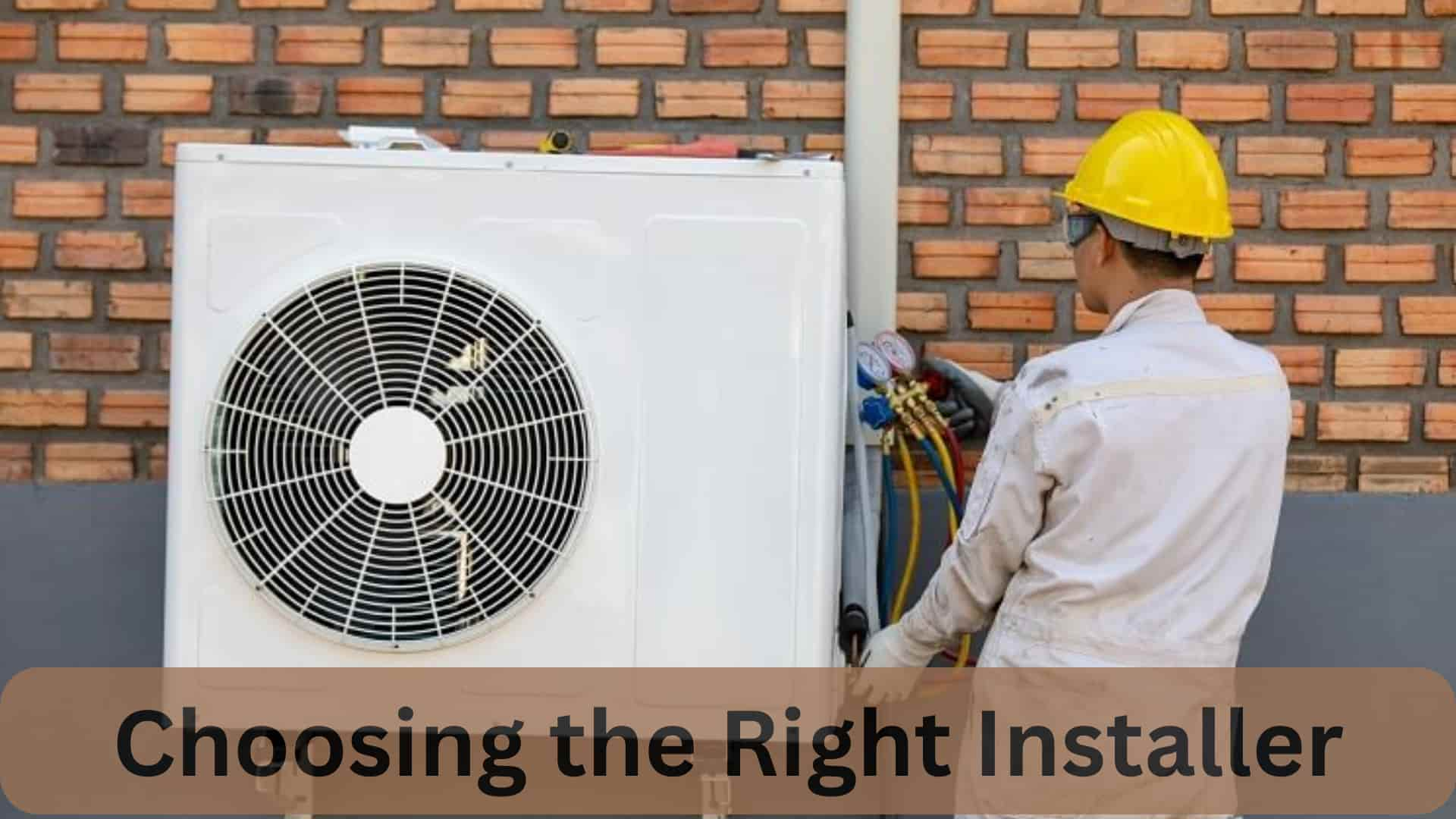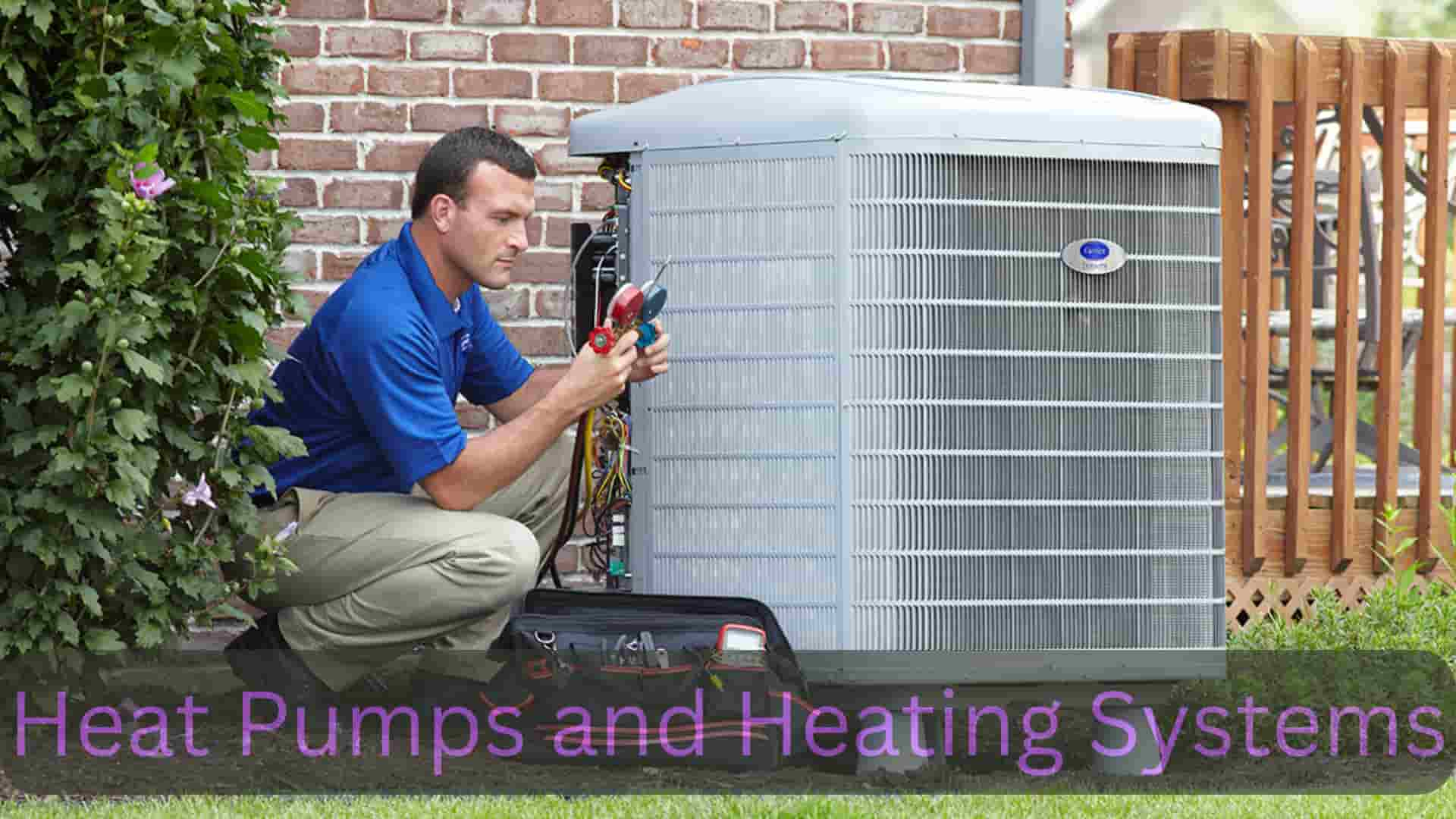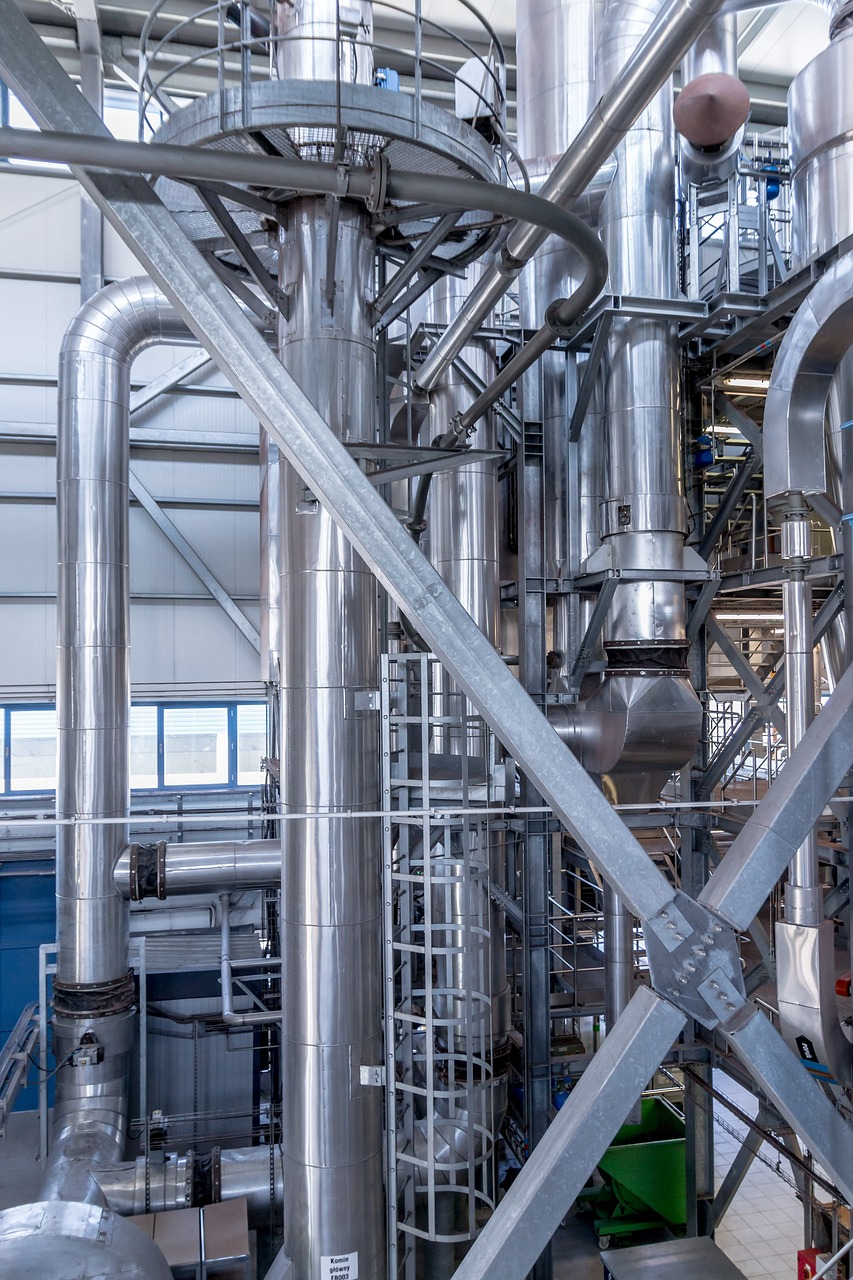Switching to renewable heating is one of the best ways to save money on energy bills while reducing carbon emissions. At EcoGreenGrant.co.uk, we help households with grants and support for installing energy-efficient systems. One of the most effective methods is Fitting Air Source Heat Pump technology, which uses outside air to heat your home. This guide explains everything you need to know about installation, costs, installers, and efficiency. If you are planning to get a heat pump installed, read on.
Understanding Heat Pumps
What is a Heat Pump?
A heat pump transfers heat between indoors and outdoors, providing efficient heating and cooling using electricity.
How Does it Work?
In winter, it pulls heat from outside air/ground into your home. In summer, it reverses to expel indoor heat outside.
Key Benefits
- Energy efficient & cost-saving
- Eco-friendly, reduces carbon footprint
- Dual use: heating & cooling
- Long lifespan when maintained
What Are Heat Pumps?
Heat pumps are efficient systems that extract heat from natural sources like air, ground, or water. Unlike boilers that burn fuel, they transfer heat, making them more eco-friendly. Many homeowners now consider Fitting Air Source Heat Pump technology as a practical solution. These systems work well with radiators, underfloor heating, and hot water cylinders. They reduce reliance on fossil fuels while delivering consistent heating. EcoGreenGrant.co.uk supports households in learning more about these systems before choosing the right type of heat pump.
Benefits of Using Heat Pumps
The main benefits of Fitting Air Source Heat Pump systems are lower energy bills, reduced emissions, and eligibility for government incentives. Heat pumps can save homeowners hundreds of pounds annually, especially when replacing old heating systems. They run efficiently and are compatible with modern heating systems, including hot water cylinders and radiators. By switching to a heat pump, you are choosing a sustainable future. EcoGreenGrant.co.uk helps customers access grants that make these installations more affordable and financially beneficial in the long term.
The Heat Pump Installation Process
A quick, visual step-by-step guide to a clean, safe and efficient heat pump install.
Preparing for Installation
Before Fitting Air Source Heat Pump, installers carry out surveys to check insulation, radiator size, and heat loss levels. This ensures efficiency and performance. Homeowners may need upgrades like a hot water cylinder or underfloor heating for better results. The installation process also includes an energy performance certificate check. EcoGreenGrant.co.uk advises customers on preparation steps and helps them apply for grants, making the installation smoother. Preparation ensures your home is fully ready for a heat pump installation and long-term energy savings.
Step-by-Step Installation Guide
The process of Fitting Air Source Heat Pump involves several stages. First, the external unit is mounted where airflow is best. Then, it’s connected to the central heating system and hot water cylinder. Installers test radiators, adjust controls, and ensure heat is distributed effectively. This step-by-step guide guarantees efficiency. EcoGreenGrant.co.uk emphasizes using MCS-certified installers to ensure compliance with UK standards. The whole installation usually takes a few days, after which homeowners enjoy a reliable, sustainable, and cost-saving heating system.
Choosing the Right Installer

Why Installer Certification Matters
Selecting the right professional is key when Fitting Air Source Heat Pump systems. A certified heat pump installer ensures compliance with building regulations and grants eligibility. Using an MCS-certified installer guarantees safe installation and efficiency. At EcoGreenGrant.co.uk, we connect households with trusted installers who provide full installation services. Choosing a professional helps avoid errors, saves money on installation costs, and ensures long-term system performance. Certified installers also offer maintenance guidance to keep your heating system reliable and efficient over the years.
Questions to Ask Your Installer
Before Fitting Air Source Heat Pump, you should ask your installer about installation costs, maintenance, and efficiency. Inquire whether your current radiators or underfloor heating system will work with the pump. Ask about planning permission, warranty options, and the estimated savings on energy bills. EcoGreenGrant.co.uk recommends requesting a full heat pump installation guide before work begins. Having this information helps homeowners feel confident, ensures compliance with regulations, and guarantees the heating system will run effectively for many years.
Costs of Heat Pump Installation
Installation
$3,000–$8,000
$1,500–$5,000
$500–$4,000
$100–$800
$300–$2,000
$200–$1,500
Affects whole cost
Can reduce cost
Installation Costs Explained
The cost of Fitting Air Source Heat Pump varies depending on property size and system requirements. Typical installation costs range between £7,000 and £13,000. If upgrades like new radiators, hot water cylinders, or underfloor heating are required, the cost of installing may be higher. However, these upgrades improve performance and efficiency. At EcoGreenGrant.co.uk, we help homeowners access heat pump grants, lowering expenses. Understanding installation costs upfront allows households to make informed decisions about switching to renewable heating systems.
Grants and Savings Available
Government incentives make Fitting Air Source Heat Pump more affordable for UK homeowners. Schemes like the Boiler Upgrade Scheme provide up to £7,500 towards installation costs. Additionally, energy-saving trusts and local councils sometimes offer further support. EcoGreenGrant.co.uk guides homeowners through these applications, ensuring maximum financial benefits. Beyond grants, the long-term savings from lower energy bills make heat pumps a wise investment. By taking advantage of incentives, families can upgrade their heating systems without heavy financial burdens, saving money each year.
Planning Permission and Regulations
Quick reference table: when you need permission, steps, timelines, costs and best practices.
| When permission is required | Major structural changes, new builds, significant extensions, change of use, work in conservation areas or listed buildings typically need planning permission. |
| Local regulations to check | Zoning, setback rules, height limits, protected species surveys, drainage & floodplain rules — council planning pages list local variations and restrictions. |
| Application steps | 1) Pre-application advice → 2) Prepare drawings & reports → 3) Submit application and fee → 4) Public/neighbour consultation → 5) Decision & conditions. |
| Typical timeline | Minor works: 4–8 weeks. Major applications: 8–13 weeks or more. Delays occur if revisions or environmental surveys are requested. |
| Costs & fees | Application fees vary by project size. Expect additional costs for drawings, structural reports, surveys, consultation and possible mitigation works. |
| Best practices | Get pre-application advice, consult neighbours early, hire experienced architects/planners, follow checklist, and factor time into your project plan. |
| Useful contacts | Local council planning office, chartered planners, building control, environmental agencies, and licensed surveyors — keep contact info handy for queries. |
Do You Need Planning Permission?
Most households don’t require planning permission for Fitting Air Source Heat Pump, as it usually falls under permitted development rights. However, certain areas such as listed buildings or conservation zones may need special approval. Checking with your local council is essential to avoid issues. EcoGreenGrant.co.uk helps homeowners determine whether permission is required. Having clarity ensures a smooth installation process. With the right guidance, you can install the system legally and start benefiting from energy-efficient heating without unnecessary delays.
MCS Certification and Compliance
MCS certification is a key requirement when Fitting Air Source Heat Pump systems in the UK. Only MCS-certified installers can access government grants and incentives for homeowners. Certification ensures your system meets safety, performance, and environmental standards. EcoGreenGrant.co.uk emphasizes the importance of compliance, as it guarantees eligibility for support schemes. Choosing MCS-certified installers also gives confidence in the long-term reliability of your system. Homeowners benefit from efficient heating while reducing their carbon footprint and saving money on energy bills.
Heat Pumps and Heating Systems

Heat Pumps with Radiators
When Fitting Air Source Heat Pump, homeowners often wonder if their existing radiators will work. In many cases, radiators need upgrading to larger or more efficient models. This ensures the heat pump delivers sufficient warmth since it operates at lower temperatures than gas boilers. EcoGreenGrant.co.uk recommends consulting your installer about radiator compatibility before installation. Upgrading radiators where necessary guarantees efficiency, comfort, and savings. Combining the system with proper radiators ensures your central heating system performs at its maximum capacity.
Heat Pumps with Underfloor Heating
Underfloor heating is an excellent match for Fitting Air Source Heat Pump systems. Both operate at low water temperatures, providing efficient heating while lowering energy bills. Homes with underfloor heating benefit from even heat distribution, improved comfort, and higher system efficiency. EcoGreenGrant.co.uk often recommends this combination to households looking for the best performance. During the installation process, installers may suggest upgrading or adding underfloor heating for long-term benefits. This combination ensures your home remains warm, cost-effective, and environmentally friendly all year round.
Efficiency and Energy Savings
How Efficient Are Heat Pumps?
One of the key advantages of Fitting Air Source Heat Pump systems is efficiency. These systems produce around three units of heat for every unit of electricity consumed, achieving up to 300% efficiency. Unlike gas boilers, which waste energy, heat pumps maximize renewable energy from the outside air. EcoGreenGrant.co.uk emphasizes the importance of proper installation to achieve the best results. Ensuring your home has good insulation and efficient radiators or underfloor heating enhances performance, helping you cut costs and reduce emissions.
Long-Term Energy Savings
By Fitting Air Source Heat Pump, homeowners can significantly cut their energy bills. The system reduces dependence on gas boilers, replacing them with a renewable alternative. Annual savings can be considerable, especially as gas and electricity prices rise. EcoGreenGrant.co.uk stresses that while installation costs may be high, the savings quickly outweigh them. Long-term financial benefits, combined with government grants, make heat pumps a strong investment. Switching ensures greener heating, reduced emissions, and money saved, securing a more sustainable future for households.
Step-by-Step Heat Pump Installation Guide
Site Survey
Inspect property, evaluate heating needs, and choose best location for the unit.
Permits & Design
Obtain planning permissions, design system size, and finalize layout plan.
Installation
Mount outdoor/indoor units, connect pipework, and secure electrical wiring.
Testing & Handover
Charge refrigerant, run efficiency tests, and guide homeowners on usage.
Initial Survey and Heat Loss Check
The first stage in Fitting Air Source Heat Pump systems is a full home survey. Installers check insulation, heating systems, and potential heat loss. This step determines whether radiators or hot water cylinders need upgrading. A certified heat pump installer ensures accurate results and compliance with regulations. EcoGreenGrant.co.uk supports households during this stage, offering guidance on grants and installation planning. Understanding your home’s requirements ensures efficiency once the system is fitted, helping you enjoy lower bills and improved heating.
Installing and Testing the System
After surveys and planning, the next step of Fitting Air Source Heat Pump involves installing the outdoor unit and connecting it to the central heating system. Installers set up the hot water cylinder, adjust heat pump controls, and ensure radiators or underfloor heating distribute warmth effectively. Final testing is performed to confirm efficiency and performance. EcoGreenGrant.co.uk advises homeowners to choose certified heat pump engineers for this process. Once installed, your heat pump delivers reliable heating, lower emissions, and long-term
Ready to Install Your Heat Pump?
Get expert installation with affordable pricing and maximum efficiency.
Book your free consultation today and take the first step towards energy savings!
Is a Heat Pump Right for You?
Suitability of Your Home
Not all properties are suitable for Fitting Air Source Heat Pump systems. Homes with proper insulation, modern radiators, or underfloor heating tend to benefit most. Older homes may need upgrades before installation. A certified installer checks the property’s heating system, hot water cylinder, and energy performance certificate before recommending a system. EcoGreenGrant.co.uk helps households determine if their property is suitable and supports them in accessing grants. Assessing suitability ensures efficient heating, financial benefits, and long-term reliability from the heat pump.
Making the Switch to Heat Pumps
If you are considering Fitting Air Source Heat Pump, switching is easier than most homeowners expect. The process includes an initial survey, installation by a certified installer, and final system testing. With government grants available, the financial burden is reduced, making heat pumps accessible to many households. EcoGreenGrant.co.uk provides step-by-step guidance and connects homeowners with trusted installers. Making the switch now means long-term savings, lower energy bills, and a greener way of heating your home for the future.
Conclusion
Fitting Air Source Heat Pump technology is one of the best solutions for energy-efficient home heating. From installation steps and costs to planning permission and grants, this guide covered everything you need to know. At EcoGreenGrant.co.uk, we specialize in helping households access funding and professional installers to make the transition smoother. Choosing a heat pump ensures reduced bills, lower emissions, and reliable heating. With the right installer and support, you can future-proof your home with a sustainable heating
What Our Happy Customers Say
⭐⭐⭐⭐⭐
“The heat pump installation was seamless! The team was professional, quick,
and explained everything clearly. My energy bills are already lower.”
— Sarah M.
⭐⭐⭐⭐⭐
“Amazing service from start to finish. The technicians were friendly and
the system works better than I expected. Highly recommended!”
— David L.
⭐⭐⭐⭐⭐
“The best decision we made for our home! Efficient, eco-friendly, and the
customer support was top-notch throughout the process.”
— Emily R.
FAQs
How long does Fitting Air Source Heat Pump take?
Fitting Air Source Heat Pump usually takes between two to five days, depending on property size and whether upgrades like radiators or hot water cylinders are needed. A certified heat pump installer manages the full installation process, ensuring efficiency, compliance, and minimal disruption to your household heating system.
Do I need planning permission for Fitting Air Source Heat Pump?
Most UK homes don’t need planning permission for Fitting Air Source Heat Pump, as it falls under permitted development. However, listed buildings or conservation areas may require approval. Always check with your local council before installation. A certified installer can guide you, ensuring your heat pump installation process is fully compliant.
How much does Fitting Air Source Heat Pump cost?
The cost of Fitting Air Source Heat Pump typically ranges from £7,000 to £13,000, depending on property size and required upgrades like underfloor heating or a hot water cylinder. Grants such as the Boiler Upgrade Scheme can reduce costs significantly, making heat pump installation affordable while lowering long-term energy bills.
Will my radiators work with Fitting Air Source Heat Pump?
Existing radiators can sometimes be used when Fitting Air Source Heat Pump, but larger or more efficient models may be needed. Heat pumps work at lower water temperatures compared to gas boilers. Your installer will check if radiator upgrades or underfloor heating are required to ensure maximum efficiency and comfort.
What are the benefits of Fitting Air Source Heat Pump?
Fitting Air Source Heat Pump provides lower energy bills, reduced carbon emissions, and eligibility for government grants. These systems are efficient, environmentally friendly, and reliable. They can heat your home, provide hot water, and integrate with radiators or underfloor heating, making them a smart, long-term investment for UK households.






